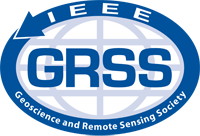FD-05: SAR Polarimetry: Basics, Processing Techniques and Applications
Eric Pottier and Carlos Lopez-Martinez
Sunday, July 26
08:30 - 17:30
Abstract:
"Nowadays, several space borne Polarimetric Synthetic Aperture Radar (PolSAR) systems are in operation as TerraSAR-X (X-Band) launched in June 2007, RADARSAT-2 (C-Band) launched in December 2007, Sentinel-1 (C-band) launched in April 2014, ALOS-2 (L-band) launched in May 2014. Also, future missions as BIOMASS (P-band), SAOCOM & SAOCOM-CS (L-band), RCM (C-band) are designed to have parametric sensitivity. The availability of spaceborne PolSAR data provides an unprecedented opportunity for applying advanced PolSAR information processing techniques to the important tasks of environmental monitoring and risk management. PolSAR remote sensing offers an efficient and reliable means of collecting information required to extract geophysical and biophysical parameters from Earth’s surface. This remote sensing technique has found many successful applications in crop monitoring and damage assessment, in forestry clear cut mapping, deforestation and burn mapping, in land surface structure (geology) land cover (biomass) and land use, in hydrology (soil moisture, flood delineation), in sea ice monitoring, in oceans and coastal monitoring (oil spill detection) etc. SAR Polarimetry represents today a very active area of research in Radar Remote Sensing, and it becomes important to train and to prepare the future generation of researchers to this very important topic. The aim of this tutorial is to provide a substantial and balanced introduction to the basic theory, scattering concepts, systems and advanced concepts, and applications typical to radar polarimetric remote sensing. This tutorial on SAR polarimetry touches several subjects: basic theory, scattering modeling, data representations, target decompositions, speckle filtering, terrain and land-use classification, man-made target analysis, etc. This lecture will be illustrated by ALOS-PALSAR, TerraSAR-X and RADARSAT-2 polarimetric SAR images. The connection to polarimetric SAR interferometry will be also briefly reviewed. This lecture is intended to scientists, engineers and students engaged in the fields of Radar Remote Sensing and interested in Polarimetric SAR image analysis and applications. Some background in SAR processing techniques and microwave scattering would be an advantage and familiarity in matrix algebra is required.
Outline
1 - Overview of Imaging Radar Polarimetry
Brief History of Imaging Radar Polarimetry
Airborne and Spaceborne Polarimetric SAR Systems
2 - Electromagnetic Vector Wave and Polarization Descriptors Monochromatic Electromagnetic Plane Wave, Polarization Ellipse The Jones and Stokes Vectors, the Wave Covariance Matrix Polarisation basis and Elliptical basis transformation SU(2) and O(4) Unitary groups Partially polarised waves and Wave Polarisation Decomposition (Born & Wolf) Synthesis
3 - Electromagnetic Vector Scattering Operators The Polarimetric Backscattering Sinclair Scattering S Matrix The Scattering Target Vectors k and ? The Polarimetric Coherency T and Covariance C Matrices The Polarimetric Mueller M and Kennaugh K matrices Change of Polarimetric Basis Target Polarimetric Characterization
4 - Polarimetric SAR Speckle Statistics and Filtering Fundamental Property of Speckle in SAR Images Speckle Statistics for Multi-look Processed SAR Images Introduction to Speckle Filtering Review of Single and Multi-Polarization Speckle Filtering Algorithms Polarimetric SAR Speckle Filtering Scattering Model Based PolSAR Speckle Filter
5 - Polarimetric Target Decomposition Concept Introduction Eigenvector-Based Decomposition (Cloude-Pottier) Model-Based Decompositions (Freeman-Durden, Yamaguchi, Van Zyl) Coherent Decompositions (Cameron, Krogager)
6 - PolSAR Terrain and Land-Use Classification Maximum Likelihood Classifier Based on Complex Gaussian Distribution Complex Wishart Classifier for Multi-look PolSAR Data Supervised Classification Using Wishart Distance Measure Unsupervised Classification Based on Scattering Mechanisms and Wishart Classifier Scattering Model Based Unsupervised Classification Quantitative Comparison of Classification Capability: Fully Polarimetric SAR versus Dual- and Single-Polarization SAR
7 - Pol-InSAR Forest Mapping and Classification Pol-InSAR Scattering Descriptors Forest Mapping and Forest Classification
8 – Polarimetric Differential SAR Interferometry for risk assessment Advanced Differential Interferometry Subsidence and Landslide analysis based on PolDInSAR data
9 - Selected Polarimetric SAR Applications Polarimetric Signature Analysis of Manmade Structures Polarization Orientation Angle Estimation and Applications Ocean Surface Remote Sensing with Polarimetric SAR Ionospheric Faraday Rotation Estimation Ship detection and analysis"
Biography:
Eric Pottier (M’95, SM’06, F’11) received the MSc and Ph.D. in signal processing and telecommunication from the University of Rennes 1, respectively in 1987 and 1990, and the Habilitation from the University of Nantes in 1998. Since 1999, he has been a Full Professor at the University of Rennes 1, France, where he is currently the Director of the Institute of Electronics and Telecommunications of Rennes (I.E.T.R – CNRS UMR 6164. His current activities of research and education are centered in the topics of analog electronics, microwave theory and radar imaging with emphasis in radar polarimetry. His research covers a wide spectrum of areas from radar image processing (SAR, ISAR), polarimetric scattering modeling, supervised/unsupervised polarimetric segmentation and classification to fundamentals and basic theory of polarimetry. He has published 10 chapters in books, more than 60 papers in refereed journals and presented more than 350 papers during International Conferences, Symposiums and Workshops. He has presented advances courses and seminars on Radar Polarimetry to a wide range of organizations and events (IGARSS 05-07-08-09-10-11-12). He was presented the Best Paper Award at the Third European Conference on Synthetic Aperture Radar (EUSAR2000) and received the 2007 IEEE GRS-S Letters Prize Paper Award. He has published a book co-authored with Dr. Jong-Sen Lee: Polarimetric Radar Imaging: From basics to applications”, CRC Press, Taylor & Francis editor, 397 pages, January. 2009, ISBN: 978-1-4200-5497-2. He is a recipient of the 2007 IEEE GRS-S Education Award “In recognition of his significant educational contributions to Geoscience and Remote Sensing” He has been elevated to IEEE Fellow (January 2011) with the accompanying citation: “for contributions to polarimetric Synthetic Aperture Radar” He is a recipient of the 2012 Einstein Professorship from the Chinese Academy of Science
Carlos Lopez-Martinez received the MSc. degree in electrical engineering and the Ph.D. degree from the Universitat Politècnica de Catalunya, Barcelona, Spain, in 1999 and 2003, respectively.
From October 2000 to March 2002, he was with the Frequency and Radar Systems Department, HR, German Aerospace Center, DLR, Oberpfaffenhofen, Germany. From June 2003 to December 2005, he has been with the Image and Remote Sensing Group – SAPHIR Team, in the Institute of Electronics and Telecommunications of Rennes (I.E.T.R. – CNRS UMR 6164), Rennes, France. In January 2006, he joined the Universitat Politècnica de Catalunya as a Ramón-y-Cajal researcher, Barcelona, Spain, where he is currently associate professor in the area of remote sensing and microwave technology. His research interests include SAR and multidimensional SAR, radar polarimetry, physical parameter inversion, digital signal processing, estimation theory and harmonic analysis.
He is associate editor of IEEE Journal of Selected Topics in Applied Earth Observations and Remote Sensing and he served as guest editor of the EURASIP Journal on Advances in Signal Processing. He has organized different invited sessions in international conferences on radar and SAR polarimetry. He has presented advanced courses and seminars on radar polarimetry to a wide range of organizations and events. Dr. López-Martínez has authored or co-authored more than 100 articles in journals, books, and conference proceedings in the Radar Remote Sensing and image analysis literature. He received the Student Prize Paper Award at the EUSAR 2002 Conference and co-authored the paper awarded with the First Place Student Paper Award at the EUSAR 2012 Conference. He has also received the IEEE-GRSS 2013 GOLD Early Career Award.




